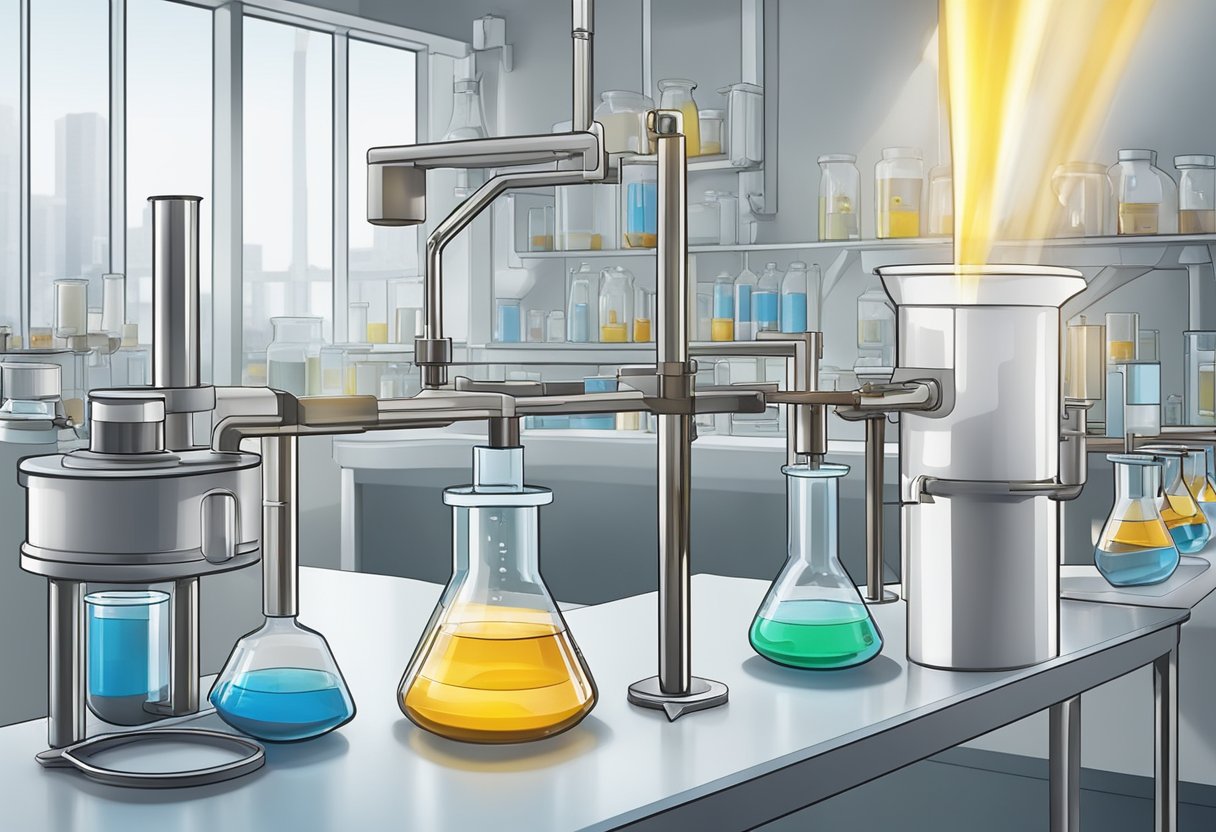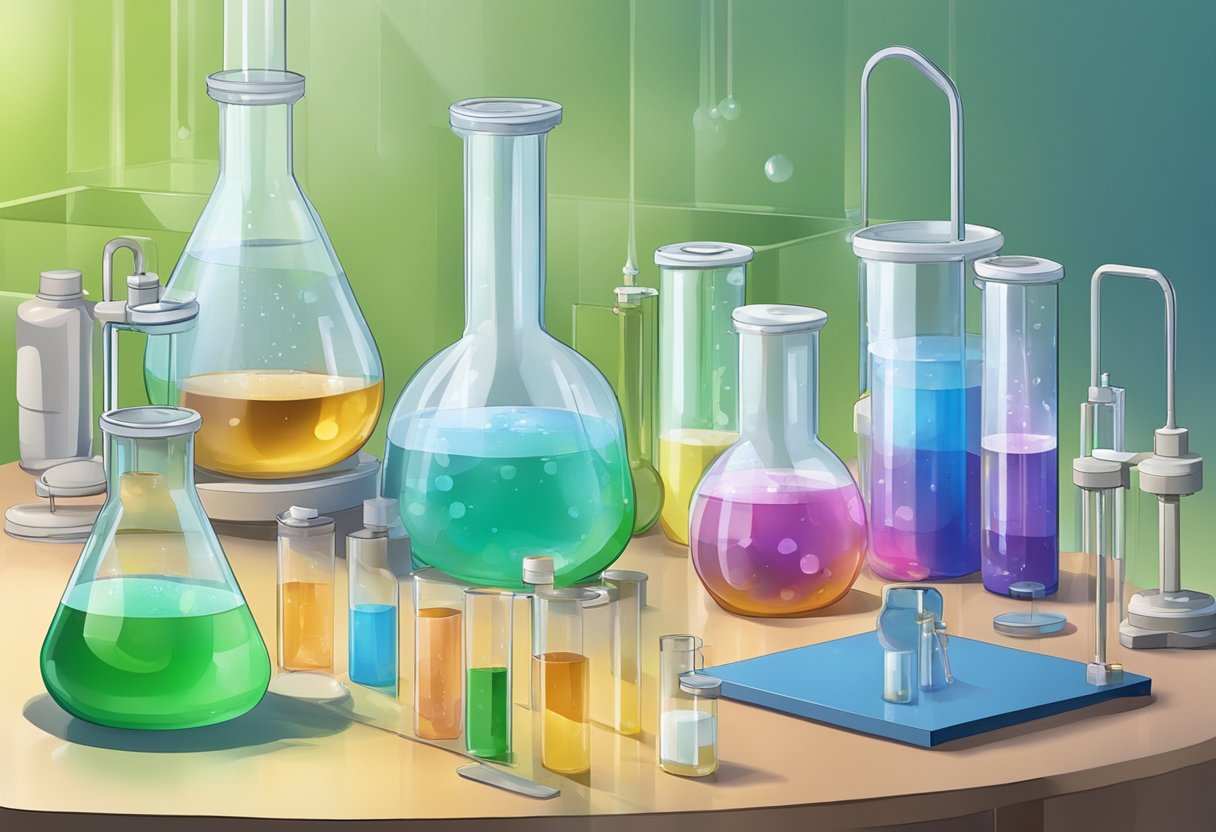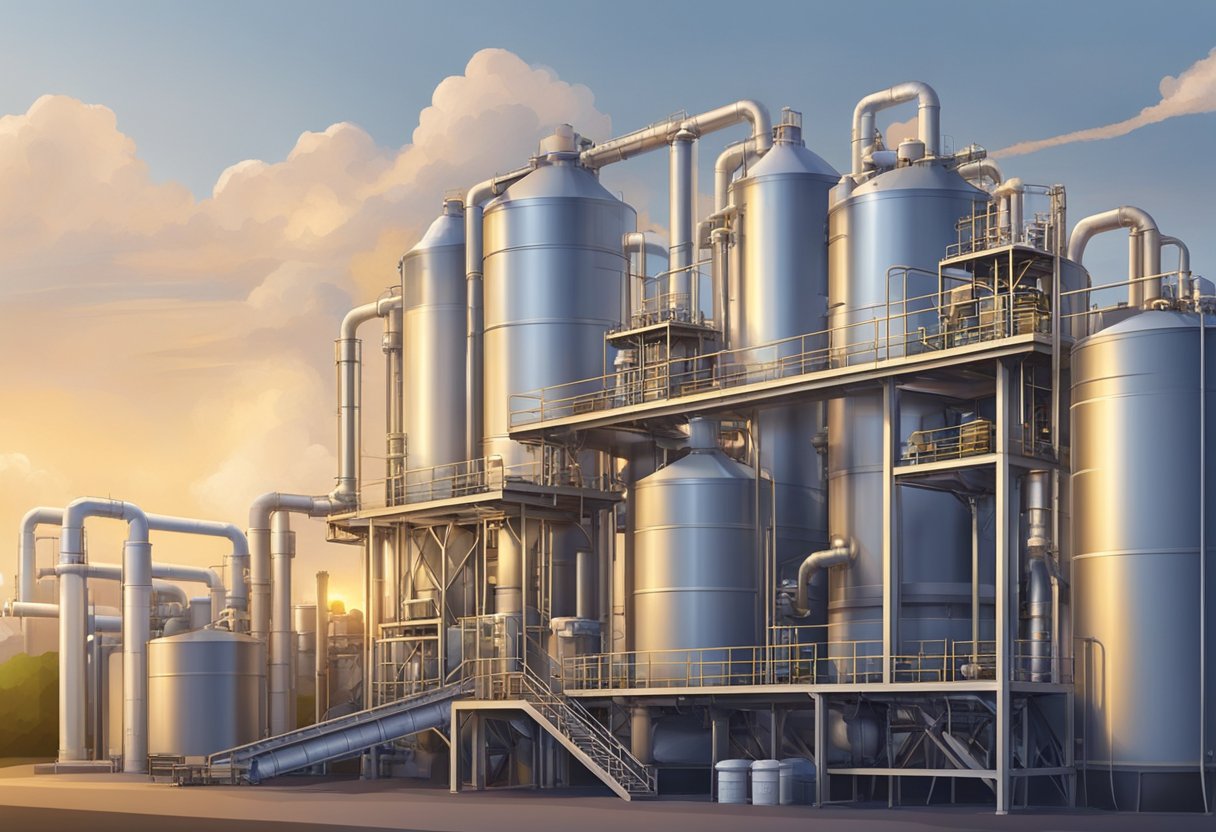Application of Adipic Acid in Various Industries
19/01/2024
Application of adipic acid is a dicarboxylic acid that is widely used in various industrial applications. Its chemical formula is C6H10O4 and it is a white crystalline powder that is soluble in water. Adipic acid is primarily used as a precursor for the production of nylon 6,6, which is a high-performance polymer that is used in a variety of applications such as textiles, automotive parts, and packaging materials.

Apart from its use in nylon production, adipic acid has several other industrial applications. It is used as a food additive, particularly as a flavoring agent in certain beverages and foods. Adipic acid is also used as a component in some lubricants, solvents, and coatings. Additionally, it is used in the production of polyurethane foams, which are used in a variety of applications such as insulation, cushioning, and packaging. Overall, adipic acid is a versatile chemical that finds application in numerous industries and products.
Chemical Properties of Adipic Acid

Application of adipic acid is a white crystalline powder with a molecular weight of 146.14 g/mol and a melting point of 152-154°C. It is soluble in water and alcohol, but insoluble in ether and benzene. Adipic acid is a dicarboxylic acid with two carboxylic acid groups (-COOH) located at the first and sixth carbon atoms of the carbon chain.
Adipic acid is a relatively stable compound with a low vapor pressure and a low toxicity. It is non-flammable and non-explosive, and it does not react with most metals or metal oxides. However, it can react with strong oxidizing agents, such as nitric acid and hydrogen peroxide, to form potentially explosive compounds.
The pKa values of adipic acid are 4.41 and 5.41, which means that it is a weak acid. It can form salts with bases, such as sodium hydroxide, to produce adipate salts. Adipic acid can also undergo esterification reactions with alcohols, such as methanol and ethanol, to form adipate esters.
Overall, the chemical properties of adipic acid make it a versatile compound that can be used in a wide range of applications, including the production of nylon, polyurethanes, and other polymers.
Industrial Synthesis of Adipic Acid

Adipic acid is an important industrial chemical used in the production of nylon, plasticizers, lubricants, and other products. The industrial synthesis of adipic acid involves several steps, including oxidation, nitration, and hydrogenation.
The most common method for producing adipic acid is through the oxidation of cyclohexane. This process involves the use of nitric acid and air to convert cyclohexane into a mixture of cyclohexanol and cyclohexanone. The mixture is then oxidized to produce a mixture of adipic acid and other byproducts.
The nitration step is a critical part of the process, as it determines the selectivity of the reaction. The use of a catalyst, such as vanadium pentoxide, can increase the selectivity of the reaction and improve the yield of adipic acid.
After the oxidation step, the mixture is purified through a series of steps, including crystallization, filtration, and distillation. The resulting adipic acid is a white crystalline powder with a melting point of 151-154°C.
Overall, the industrial synthesis of adipic acid is a complex process that requires careful control of reaction conditions and the use of specialized equipment. However, it is an important process for the production of a wide range of products used in everyday life.
Adipic Acid in Polymer Production
Nylon Manufacturing
Adipic acid is an important raw material used in the production of nylon. Nylon is a synthetic polymer that is widely used in the manufacture of textiles, carpets, and various other industrial products. Nylon is produced by reacting adipic acid with hexamethylene diamine. This reaction results in the formation of a polymer chain that is then extruded to form nylon fibers.
Adipic acid is used in the chembroad production of nylon due to its ability to react with hexamethylene diamine to form a polymer with excellent thermal stability, high strength, and good abrasion resistance. Nylon produced using adipic acid is also known for its excellent resistance to chemicals, making it ideal for use in harsh environments.
Polyurethane Foams
Adipic acid is also used in the production of polyurethane foams. Polyurethane foams are widely used in the manufacture of furniture, automotive components, and various other industrial products. Adipic acid is used in the production of polyurethane foams due to its ability to react with diisocyanates to form a polymer with excellent mechanical properties.
Polyurethane foams produced using adipic acid are known for their excellent strength, durability, and resistance to wear and tear. Adipic acid is also used in the production of polyurethane coatings, which are widely used in the automotive and aerospace industries due to their excellent resistance to abrasion and corrosion.
In conclusion, adipic acid is an important raw material used in the production of various polymers, including nylon and polyurethane foams. Its excellent thermal stability, high strength, and good abrasion resistance make it an ideal choice for use in harsh environments.
Food and Beverage Industry
Acidulant in Food Products
Adipic acid is widely used in the food industry as an acidulant, which imparts a sour taste to food products. It is commonly used in the production of carbonated beverages, fruit juices, and dairy products. Adipic acid is also used as a preservative in some food products, such as canned vegetables and fruits.
In addition to its sour taste, adipic acid also functions as a buffering agent, helping to maintain the pH level of food products. This is particularly important in the production of canned foods, where a stable pH level is necessary to prevent spoilage.
Flavor Enhancer in Beverages
Adipic acid is also used as a flavor enhancer in the beverage industry. It is commonly added to soft drinks, energy drinks, and sports drinks to enhance their flavor and provide a tart taste. Adipic acid is also used in the production of powdered drink mixes, where it helps to improve the solubility of the product.
Overall, adipic acid is a versatile ingredient that plays an important role in the food and beverage industry. Its ability to impart a sour taste, act as a buffering agent, and enhance flavor makes it a valuable component in many food and beverage products.
Adipic Acid as an Intermediate
Adipic acid is a dicarboxylic acid that is widely used as an intermediate in the production of various chemicals, including nylon, polyurethane, and plasticizers. Its unique chemical properties make it an essential component in many industrial applications.
Plasticizers Production
Adipic acid is a key ingredient in the production of plasticizers, which are used to make plastics more flexible and durable. The most common plasticizer produced from adipic acid is dioctyl adipate (DOA), which is used in a wide range of products, including food packaging, toys, and medical devices. Adipic acid is also used to produce other plasticizers, such as dibutyl adipate (DBA) and diisobutyl adipate (DIBA).
Lubricant Components
Adipic acid is also used as a component in the production of lubricants. It is used to produce adipate esters, which are used as base oils in a wide range of lubricants, including engine oils, gear oils, and hydraulic fluids. Adipate esters offer excellent lubricating properties, high thermal stability, and low volatility, making them ideal for use in high-performance applications.
Overall, adipic acid is an important intermediate in the production of a wide range of chemicals, including plasticizers and lubricants. Its unique chemical properties make it an essential component in many industrial applications, and its versatility and reliability ensure that it will continue to be an important part of the chemical industry for years to come.
Pharmaceutical Applications
Medication Excipient
Adipic acid has a wide range of applications in the pharmaceutical industry. One of the most common uses of adipic acid is as an excipient in medication formulations. Excipients are inactive substances that are added to medications to improve their physical and chemical properties, such as stability, solubility, and bioavailability.
Adipic acid is often used as an excipient in oral medications due to its low toxicity and ability to improve the stability of the medication. It is also used in topical medications as a pH adjuster and buffering agent.
Controlled-Release Formulations
Adipic acid is also used in the development of controlled-release formulations. Controlled-release formulations are designed to release medication over a prolonged period of time, which can improve patient compliance and reduce the frequency of dosing.
Adipic acid can be used in the development of controlled-release formulations due to its ability to form stable complexes with certain medications. These complexes can slow down the release of the medication, allowing for a more gradual and sustained release.
Overall, adipic acid is a versatile compound with a wide range of applications in the pharmaceutical industry. Its use as an excipient and in the development of controlled-release formulations makes it an important component in many medications.
Adipic Acid in Agriculture
Adipic acid, a dicarboxylic acid, has various applications in agriculture. It is used as a fertilizer additive and soil pH regulator.
Fertilizer Additives
Adipic acid is used as a fertilizer additive to improve the efficiency of nitrogen fertilizers. It helps in reducing the loss of nitrogen through volatilization and leaching. The addition of adipic acid to nitrogen fertilizers enhances the availability of nitrogen to plants and increases yield. It also improves the quality of crops by enhancing their nutrient content.
Soil pH Regulator
Adipic acid is used as a soil pH regulator to adjust the pH of alkaline soils. It helps in the release of nutrients that are otherwise unavailable to plants due to high pH. Adipic acid reacts with soil components to form water-soluble salts, which are easily absorbed by plants. It also helps in the prevention of aluminum toxicity in plants by reducing the solubility of aluminum in soil.
In conclusion, adipic acid has significant applications in agriculture as a fertilizer additive and soil pH regulator. Its use can enhance crop yield and quality while also improving soil health. However, it is important to use adipic acid in moderation and in accordance with recommended guidelines to avoid any negative effects on the environment.
Environmental Impact and Sustainability
Biodegradable Polymer Research
Adipic acid is being increasingly used in the production of biodegradable polymers. Biodegradable polymers are those that can be broken down by natural processes into harmless substances. Adipic acid is used as a precursor in the production of biodegradable polymers such as polyesters, polyamides, and polyurethanes.
The use of biodegradable polymers has several environmental benefits. They reduce the amount of plastic waste that ends up in landfills and oceans, and they also reduce the demand for non-renewable resources such as petroleum. Biodegradable polymers also have the potential to reduce greenhouse gas emissions during their production, as they can be made from renewable resources such as corn starch or sugarcane.
Green Chemistry Initiatives
Adipic acid is also being used in various green chemistry initiatives. Green chemistry is an approach to chemical production that aims to reduce or eliminate the use and generation of hazardous substances. Adipic acid is used as a starting material in the production of various green chemicals such as bio-based solvents, biofuels, and bio-based lubricants.
The use of adipic acid in green chemistry initiatives has several environmental benefits. It reduces the use of hazardous chemicals and reduces the generation of hazardous waste. It also promotes the use of renewable resources and reduces the dependence on non-renewable resources.
In conclusion, the use of adipic acid in biodegradable polymer research and green chemistry initiatives has several environmental benefits. It reduces the amount of plastic waste, reduces the use of non-renewable resources, and promotes the use of renewable resources. It also reduces the use and generation of hazardous substances, promoting a safer and more sustainable chemical industry.
Global Market and Economic Aspects
Adipic acid is a widely used chemical compound with a global market that is expected to grow significantly over the next few years. The increasing demand for adipic acid can be attributed to its versatile applications in various industries such as automotive, textiles, and packaging.
According to a report by Grand View Research, the global adipic acid market size was valued at USD 5.01 billion in 2021 and is projected to reach USD 7.07 billion by 2028, growing at a CAGR of 4.7% from 2021 to 2028. The report also highlights the growing demand for adipic acid in the automotive sector due to its use in the production of nylon, which is used in the manufacturing of various automotive components.
The Asia Pacific region is the largest consumer of adipic acid, with China being the largest market in the region. The increasing demand for adipic acid in China can be attributed to the growth of the automotive industry and the increasing demand for nylon in the country. North America and Europe are also significant markets for adipic acid due to the presence of major end-use industries such as textiles and packaging.
The economic aspects of the adipic acid market are also noteworthy. The production of adipic acid requires a significant amount of energy, which can result in high production costs. However, the increasing demand for adipic acid has led to the development of various production technologies that are more energy-efficient, thereby reducing production costs.
In conclusion, the global market for adipic acid is expected to grow significantly, driven by the increasing demand for nylon in the automotive industry and the growth of end-use industries such as textiles and packaging. While the production of adipic acid can be costly, the development of new technologies is expected to reduce production costs and make adipic acid more accessible to various industries.
Future Trends in Adipic Acid Applications
Adipic acid is a versatile chemical compound that finds use in various industries. It is primarily used in the production of nylon, but its applications are not limited to this. With the growing demand for eco-friendly and sustainable products, there is a need for the development of new applications for adipic acid that are both economically viable and environmentally friendly.
One potential application for adipic acid is in the production of biodegradable plastics. Biodegradable plastics are a promising alternative to traditional plastics, which can take hundreds of years to decompose. Adipic acid can be used as a raw material in the production of biodegradable plastics, which have the potential to reduce the amount of plastic waste in the environment.
Another area where adipic acid can find potential applications is in the production of biofuels. Adipic acid can be converted into adipic dihydrazide, which can be used as a fuel additive to improve the performance of diesel engines. This could lead to a reduction in greenhouse gas emissions and a more sustainable energy future.
Furthermore, application of adipic acid can also be used in the production of coatings and paints. Adipic acid-based coatings and paints have excellent durability and resistance to corrosion, making them ideal for use in harsh environments. This could have applications in the automotive and aerospace industries, where coatings and paints are subjected to extreme conditions.
Overall, the future of adipic acid applications looks promising. With ongoing research and development, new applications for adipic acid are likely to emerge, leading to a more sustainable and eco-friendly future.




